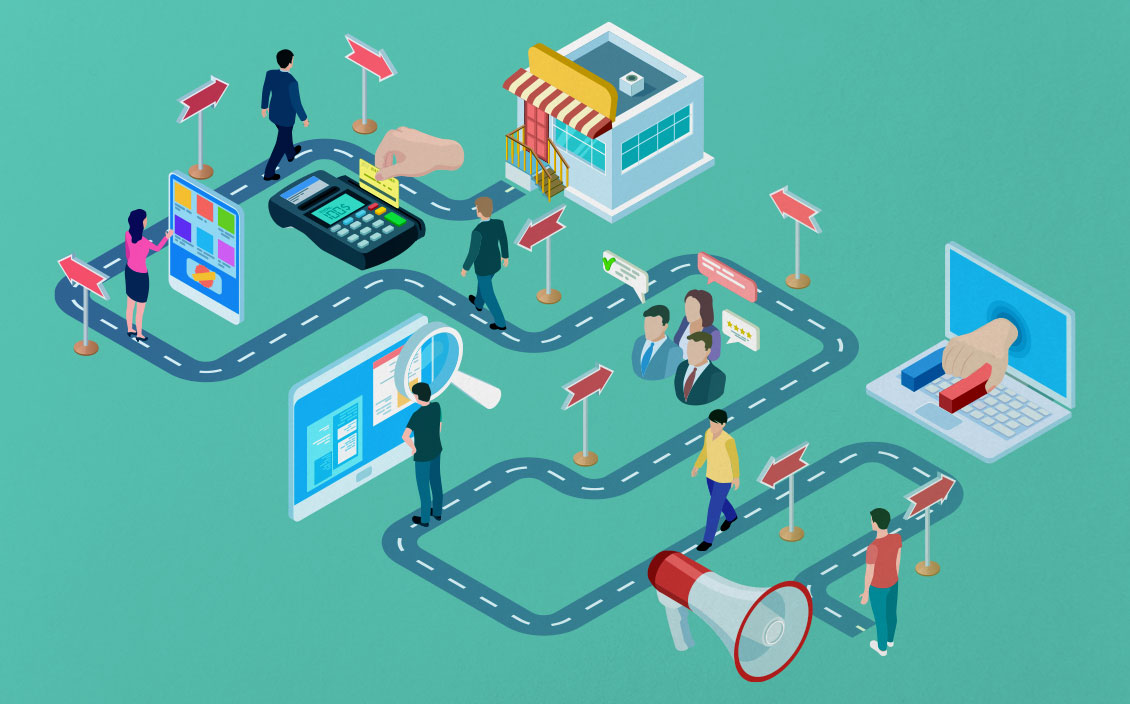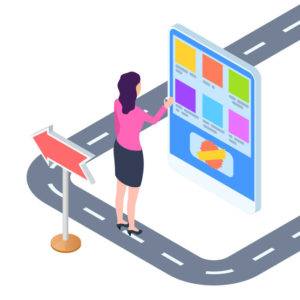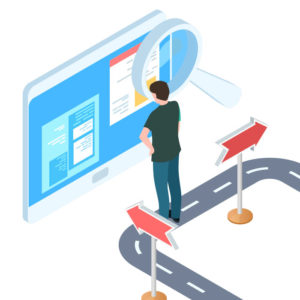
According to Pew Research, 77% of Americans go online daily, a figure that includes 26% who say they go online “almost constantly,” and 43% who are online several times a day.
Regardless of your niche or industry, or if your product or services are B2B or B2C focused, the above statistics show that your target market is online at any given time. The questions become who is your target, how are they thinking, and how do you reach them at an optimal time in the buyer’s journey through content and email marketing?
If your company is B2B, your content and email marketing strategy likely centers on business owners, C-levels, and marketing directors.
While all work toward a common goal, C-suites will think differently than marketing managers or implementers. Unless people in upper management are wearing multiple hats, their focus will primarily be on frameworks, principles, or models (strategy).
Those toward the middle or bottom of a company hierarchy (marketing directors, implementers) tend to concentrate on information or direction (tactics).
For B2C companies, dealing with consumers tends to be more unpredictable than B2B clients because of the emotion involved. Consumers, while more informed than in years past, are still more inclined to make impulse buying decisions. Consumers want to know all the benefits right now no matter where they are or what device they are using.
Something that triggers a consumer to buy won’t get the same reaction from a C-level. The behavioral economics of the two have more differences than similarities.
Proven Digital Marketing Methods
Regardless of which business model your company employs, there are two tried and proven digital marketing methods that can help you communicate to the appropriate people with the proper message at the right time: content and email marketing.
Content marketing rakes in conversion rates six times higher than other methods. – Content Marketing Institute
In its purest form, content marketing is about informing and educating. If someone has a problem, that person will look for an answer, ideally your solution, from your content.
Email is 40 times more effective at acquiring new customers than Facebook or Twitter. – McKinsey & Company
Email marketing is about merely distributing your content to relevant people.
Content and email marketing form the perfect union. The issue for many businesses is that they use the two correctly but separately, do both but don’t know how to use them together effectively for optimal results, or are only doing one or the other consistently.
Tethering your content and email marketing efforts with the customer’s buying journey empowers you to reach your target market with a message that educates, nurtures, and solves issues no matter where they are in the buying cycle.
 Creating a Customer Buying Journey
Creating a Customer Buying Journey
The journey of the consumer has four stages:
Stage 1 (Awareness)
This stage is where a visitor to your site or a prospect is aware or becomes aware of your product or service via some offline or online touchpoint (ad, search results, etc.). People in this stage are not in buy mode; they are looking for a solution to a problem. Educate them. Build trust and authority.
What type of content should you be creating?
- Comprehensive guides
- Quality blog posts
- Educational videos
- Podcasts
- Infographics
- Lead Magnets (e.g., ebooks, special reports, white papers)
Automating and Segmenting Stage 1 Email Campaign
Note: You must determine how often and how many emails you send in this stage. 5-7 initial emails should suffice, more or less depending on your industry and complexity of your product or service.
Step 1: Send a welcome email. Keep it short and to the point, while letting them know what they can expect from future emails.
Step 2: Send 2-4 emails over the following days. These emails will be touching on their pain points and your solutions. Remember, you’re not trying to sell; you want to educate, build trust, and show your industry knowledge.
Step 3: Send 1-2 final emails. This email is where you can solely focus on your product or service as the solution to their problem. While you are still not going for a sale, if you have a unique, discount, or trial offer, those would be timely call-to-actions to include.
Stage 2 (Evaluation and Intent)
The prospect found value from the content you created in the awareness phase and is still interested in your brand. While some people can go from stage 1 to 3 without your help, most will need more information on your product or service. Highlighting consumer benefits from the features of your goods or assistance is what this phase is all about.
What type of content should you be creating?
Some of stage 1 content can cross over here, but also:
- Product downloads (if applicable)
- Webinars
- Case studies and testimonials
- Live chats
- Discounts/trial offers

Step 1: Send a welcome email. This email should let people know in detail how your product or service will help them. Your product or service will more than likely solve several issues. You can put the most critical problem in this email.
Step 2: The next 2 to 3 emails can focus on additional problems and how your brand is the solution. Using case studies and testimonials within your emails will further inspire consumer action.
Stage 3 (Decision)
The prospect is ready to buy what you’re offering. The previous two phases were all about education and nurturing. This stage is all about action.
What type of content should you be creating?
- Comparison charts
- Thorough FAQ page
- Demo videos
- Case studies
- Webinars/events
Automating and Segmenting Stage 3 Email Marketing Campaign
The decision stage will be shorter than the previous two campaigns in terms of emails sent.
Step 1: Send 2-5 emails over the next week or two. These emails will recognize that the potential lead knows how your brand will benefit them. There still may be some hesitance, so remind them of their pain points and how you can help. Use more case studies, video testimonials, and other social proof to show how your solution solved other consumers’ issues.
Stage 4 (Loyalty)
Once a lead becomes a customer, you shouldn’t forget about them. Building a strong following of advocates is a potent marketing asset. Continuing to provide value and maintaining a relationship with conversational marketing and loyalty programs is how you earn brand loyalty.
What type of content should you be creating?
- Company or product updates (like newsletters)
- Loyalty programs
- Blog posts
Validity understands the importance of aligning content and email marketing efforts with the decisions and journey of consumers. We also recognize that strong email campaigns start with real email addresses. To learn how BriteVerify can help you verify email address accuracy and deliverability, and improve your email marketing conversion, please contact us or call 1-800-961-8205.
 Creating a Customer Buying Journey
Creating a Customer Buying Journey